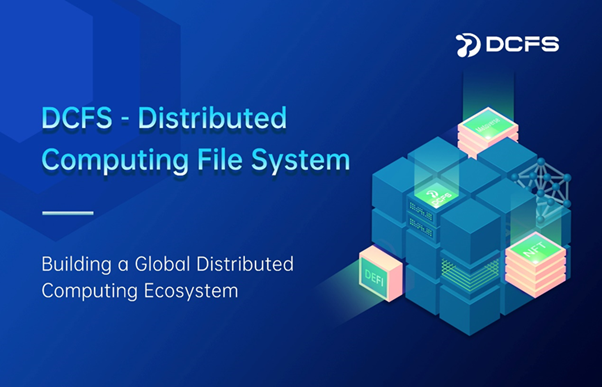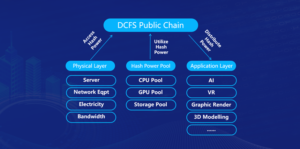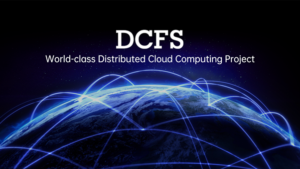News
DCFS – Distributed Computing File System, Building A Global Distributed Computing Ecosystem

Under the epidemic situation, the sustainable development of the digital economy shows great market potential. According to the White Paper on the Development of China’s Digital Economy (2020) issued by the China Academy of Information and Communications, the scale of China’s digital economy has increased from 2.6 trillion in 2005 to 39.2 trillion in 2020. According to this growth rate, the scale of the digital economy in 2021 may exceed 40 trillion.
With the rapid development of the digital economy, the application of digital technology such as big data, artificial intelligence, cloud computing, and so on, has brought more computation, which requires our computers to have more powerful computing power. At present, on average, 68% of the computing power of the computer in the world is idle every day, so that the computing power of the computer cannot be fully utilized.
The DCFS team seized the market opportunity and, after many years of research, developed the DCFS computing infrastructure public chain that is suitable for the digital economy environment in 2021, which aims to realize the sharing of global computing resources, to improve the utilization rate of global idle computing power, and to meet the needs of many parties by using encrypted currency as a means of calculating power payment.
What is DCFS?
DCFS, known as Distributed Computing File System, a distributed computing file system, was proposed by the DCFS technical team on September 10, 2021, dedicated to using the idle computing power of the computers of thousands of volunteers around the world to meet the growing demand for data processing on the Internet.
The public chain of DCFS computing infrastructure is mainly composed of the DCC chain, computing power dispatching center and decentralized computing power provider. On the DCFS public chain, the power dispatching center audits and monitors the power of the access in real-time, and submits the proof of computing power to the blockchain. The DCC chain will distribute yield incomes according to the proof of computing power. In addition, the DCC chain is also compatible with EVM and has the ability to support all kinds of popular DAPPs.

DCFS will combine DEFI/ Metaverse/NFT and distributed high-performance computing network to build a complete DCFS chain online and offline ecological chain.
DCFS consists of three main phases:
Stage 1: DEFI Ecology on DCFS chain
According to CoinGecko, as of September 24, 2021, the market value of the DeFi protocol was $119.6 billion. DCFS aims at DEFI’s huge market and is committed to opening on and off the chain of the financial industry. The first phase of DCFS will be based on DEFI, establishing a complete chain of lending, aggregator and dealmaking, and users will implement a full range of financial services on DCFS. And the revenue generated by the business will be returned to all users who hold the DCFS unique token DCC.
Stage 2: Offline NFT Ecology on DCFS chain
The transaction value of NFT exploded in 2021. According to the latest data from CoinGecko, a blockchain analysis site, it shows that the total market capitalization of NFT has exceeded $30 billion. DCFS attaches great importance to this ecological industry with great development prospects, is committed to building a perfect NFT infrastructure, supporting project creation, building a comprehensive NTF transaction circulation platform, and developing and innovating derivative applications. The second phase of DCFS will be based on NFT, project creation as the core, transaction circulation and other derivative applications as the driver, to create a complete NFT ecological chain. Users will enjoy low-cost, secure, and efficient digital services on DCFS. The benefits generated by the business will be returned to the contributors involved in the ecological construction.
Stage 3: Metaverse Ecology on DCFS chain
At present, the global market size of the metaverse exceeds 40 billion US dollars, and the potential market size exceeds 100 billion US dollars in 2025. The market capitalization is expected to reach $1.5 trillion by 2030. However, at present, the metaverse market is still relatively scattered and is in its infancy. DCFS aims at the blank market and is committed to creating a platform for metaverse aggregation on the chain. The third phase of DCFS will be based on the metaverse, building a complete ecological platform from the establishment of the metaverse project (game/social/entertainment/culture, etc.), the production and release of metaverse products, the combination of on-chain projects and offline peripheral products, and the decentralized exchange of the metaverse. Users will experience perfect metaverse ecological services on DCFS. The benefits generated by the business will be returned to the contributor involved in the ecological construction.
DCFS classifies computer resources from the point of view of computing power, and accesses a specific platform in a loose mode. At the same time, it uses blockchain technology to ensure the reliability of data, so as to solve the problem of scheduling small and medium-sized computing resources in the whole network. Obviously, DCFS has become the most efficient solution to computer data-intensive problems, and it is a very effective technical means to establish a global trusted shared computing network. At present, the rapid development of the digital economy has laid a good technical foundation for the realization of global computing resource sharing. In the era of shared computing, the future is already here with us.


